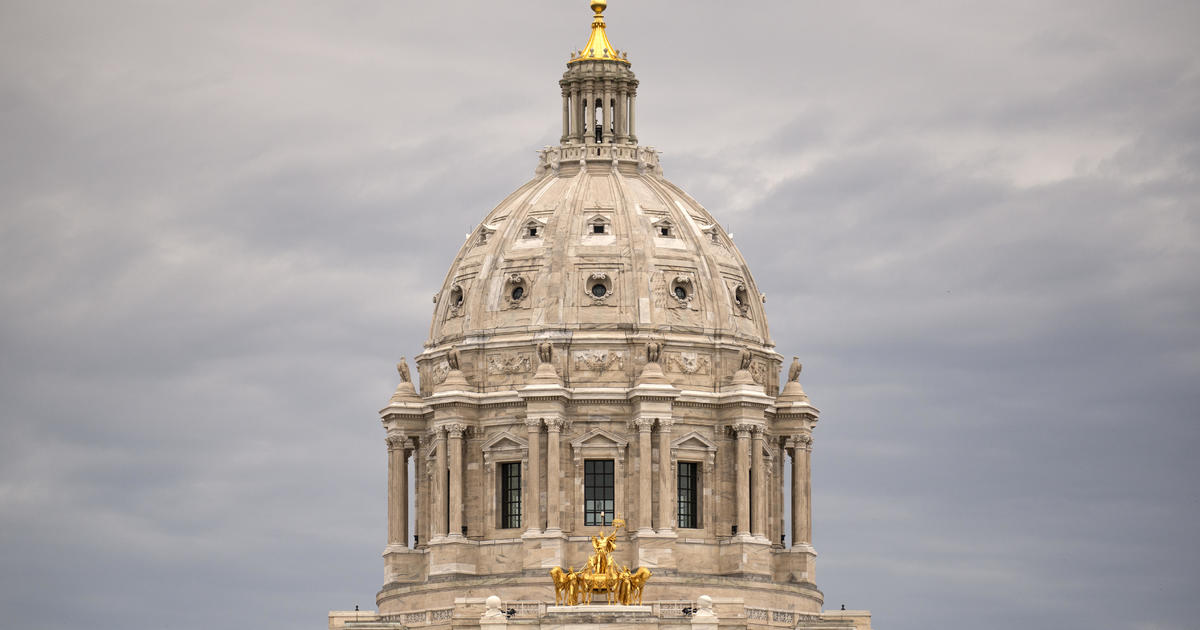Minn. Likely To Keep 8 U.S. House Seats
MINNEAPOLIS (AP) -- The payoff for all the time and effort spent trying to get every Minnesota resident counted in the 2010 Census is expected to come Tuesday, when the state's official 2010 population is released and residents learn whether they will keep their eight seats in the U.S. House.
States that lose seats lose influence in Washington and votes in the electoral college, so giving up a seat can mean less attention both from the federal government and presidential candidates.
That's why Minnesota sent census takers under bridges to find the homeless, sought out snowbirds wintering the in the South, organized student groups to get their classmates counted and hired new immigrants to encourage their communities to participate. The massive effort could be what keeps the state from losing clout in Washington.
The latest analysis by reapportionment expert Kimball Brace shows Minnesota making the cutoff to hang onto its House seats by about 15,000 residents, with Missouri losing one seat instead.
"You folks do a better job of getting a complete count than Missouri," Brace said Monday.
Minnesota had the most accurate count of any state in the nation in 2000, said Minnesota State Demographer Tom Gillaspy, citing a follow-up report commissioned by the U.S. Census Bureau. Missouri's undercount was less than the national average but greater than Minnesota's.
Gillapsy said his gut feeling was that Minnesota's effort to reach hard-to-count groups would be enough to keep its eighth seat, but he figured the state would make it by less than 1,500 people out of population of 5.27 million.
"We blanketed the state, basically, and got to every group of people you can possibly imagine," he said.
Counting everyone is key to getting a fair share of the $400 billion in federal money allocated annually based on census figures, Gillapsy said. The allocation is adjusted annually, but "if you start too low on that, you are messed up for the whole decade," he said.
The Census Bureau releases the official populations for each state and the nation every 10 years. Each state gets a representative share of the 435 seats in the House. States with fast-growing populations gain seats from states that grew more slowly or lost population.
Minnesota has had eight seats in Congress since 1960, when it lost a seat as the nation's population shifted South and West. While Minnesota's growth has been estimated at 7 percent over the past decade, it's been higher in other states as that decades-old migration from the East and Midwest continues.
Brace predicted Arizona, Georgia, Nevada, South Carolina, Utah and Washington would each gain a seat; Florida would gain two seats and Texas would pick up four. He thought Illinois, Iowa, Louisiana, Massachusetts, Michigan, Missouri, New Jersey and Pennsylvania would each lose a seat, and New York and Ohio would each lose two.
The wildcard in all of this is members of the armed services and their families who are stationed overseas. Members of the National Guard are counted at their home residences, but Brace said career military members are often counted at the home address they gave when they enlisted.
"That's probably where mom and dad live," Brace said, so states that send the most people to the military benefit. "It's kind of a suspect number."
Each state also uses the official population figure to redraw its congressional and state legislative districts, so that each district has the same number of residents. Political parties typically try to draw the maps in their favor.
Gillaspy, who said he was going into his fourth redistricting process, said the boundaries in Minnesota would likely be determined like any other law. The state House and the Senate will come up with plans, reconcile them and send them to the governor to sign or veto.
If history is a guide, he said, it's unlikely the Republican-controlled Legislature and Democratic Gov.-elect Mark Dayton will agree and the matter will go to court. In that case, it's probable the Supreme Court will appoint a three-judge panel to sort it out. The new maps must be done by Feb. 21, 2012.
Even if Minnesota retains its eight House districts, they will need to be changed, Gillaspy said. The suburban districts held by Republican Reps. Michelle Bachman and John Kline are too large while those held by Democrats Betty McCollum, Keith Ellison and Collin Peterson are too small.
But redoing the Congressional districts is usually easier than balancing out state lawmakers' districts, he said.
It can get ugly "when you have Democrats and Republicans trying to carve up the pie to their advantage," said Dean Barkley, a political independent who was Gov. Jesse Ventura's point man on redistricting in 2001. "That's why it has always defaulted to the Supreme Court, because they couldn't agree on a plan."
He predicted that will happen next year, especially if Minnesota loses a U.S. House seat and the Legislature tries to combine the Twin Cities districts held by Ellison and McCollum into one.
"I would be the most shocked person in the world if the Republicans would send a redistricting plan to the governor that he would sign," Barkley said.
(© Copyright 2010 The Associated Press. All Rights Reserved. This material may not be published, broadcast, rewritten or redistributed.)



